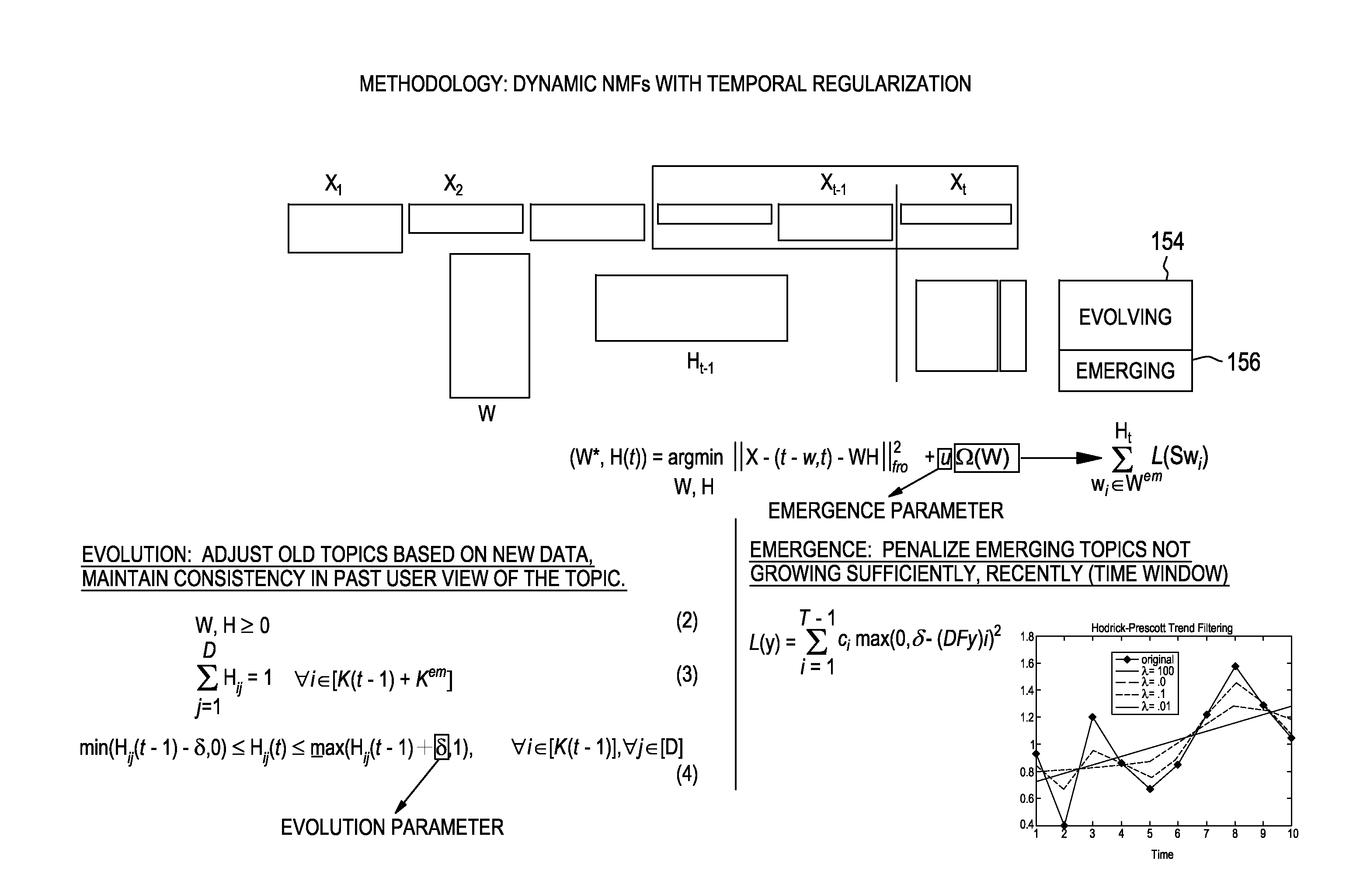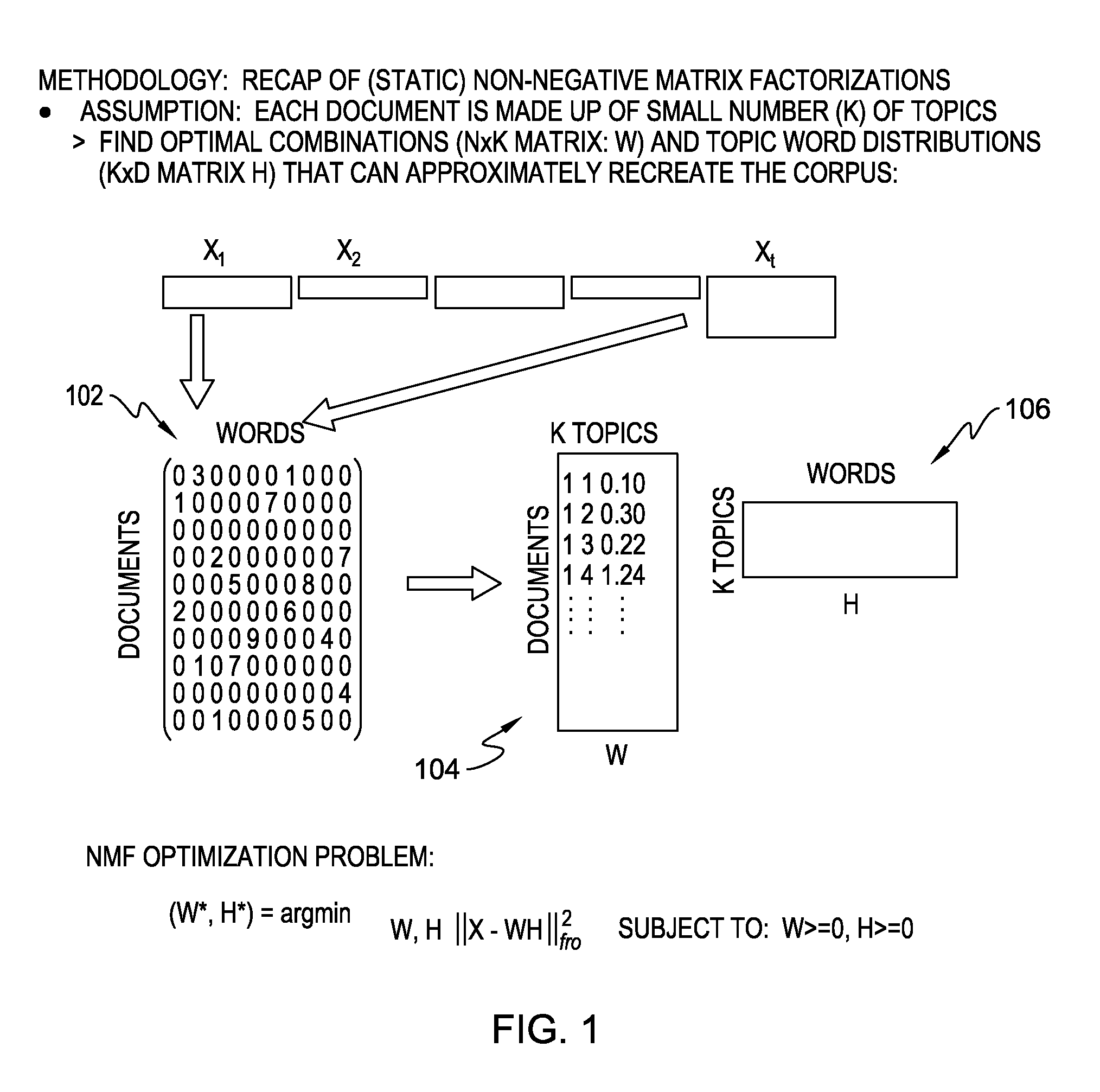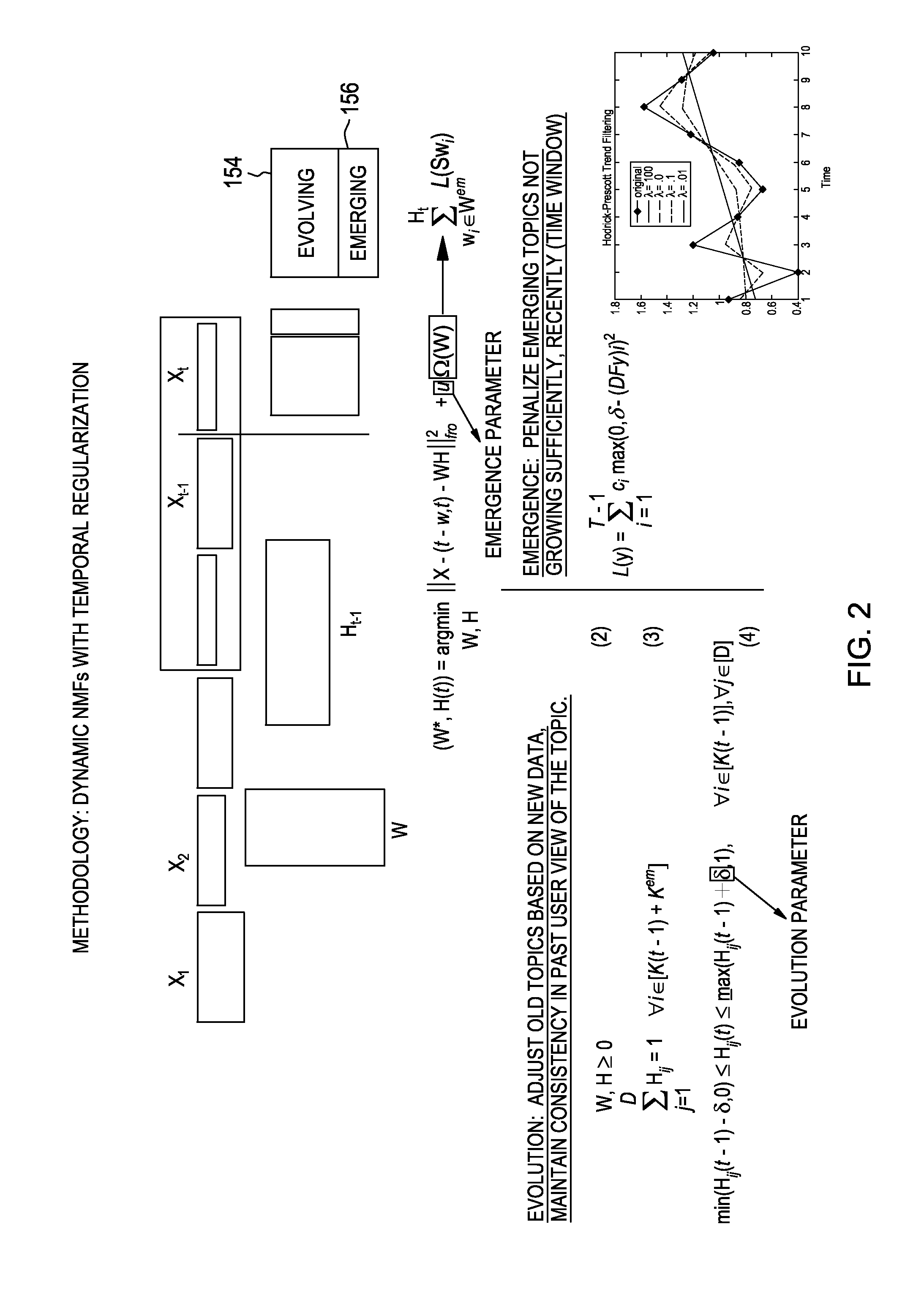Inferring emerging and evolving topics in streaming text
a streaming text and topic technology, applied in the field of document analysis, can solve the problems of underlying topics drifting, new twists in the problem of streaming datasets,
- Summary
- Abstract
- Description
- Claims
- Application Information
AI Technical Summary
Benefits of technology
Problems solved by technology
Method used
Image
Examples
case 1
[0049] hi is evolving: For an evolving topic, the optimization needs to be performed under the constraints of equations (4) and (3). Thus the optimum hi* is obtained by projection onto the set ={hi: hi ∈ΔD, lj≦hij≦uj} for appropriate constants lj and uj. This isJ equivalent to a projection onto a simplex with box constraints. Adapting a method due to [P. M. Pardalos and N. Kovoor. An algorithm for singly constrained class of quadratic programs subject to upper and lower bounds. Mathematical Programming, 46:321-328, 1990], we can find the minimizer in O(D) time i.e., linear in the number of coordinates.
case 2
[0050] hi is emerging: For an emerging topic ={hi:hi ∈ΔD} and the optimization equation (8) becomes equivalent to a projection onto the simplex ΔD. the same algorithm [P. M. Pardalos and N. Kovoor, An algorithm for singly constrained class of quadratic programs subject to upper and lower bounds, Mathematical Programming, 46:321-328, 1990] again gives us the minimizer in linear time O(D).
[0051]Optimization over evolving wi: When wi ∈ Wev, the second term in equation (7) does not contribute and using the RRI scheme, the optimization problem can be written down as wi*=arg minwi≧0∥R−wihiT∥2. Similar to equation (8), simple algebraic operations yield that the above minimization is equal to the following simple projection algorithm
argminwi≥0wi-Rhi / hi22(9)
The corresponding minimizer is simply given by
wij=max(0,1hi2(Rhi)j).argminwi≥0R-wihi⊤2+L(Swi)
[0052]Emerging wi: When wi ∈ Wem, the RRI step of the corresponding optimization problem look like
argminwi≥0wi-Rhi2+μL(Swi) / hi2(10)[0053]Noting t...
PUM
 Login to View More
Login to View More Abstract
Description
Claims
Application Information
 Login to View More
Login to View More - R&D
- Intellectual Property
- Life Sciences
- Materials
- Tech Scout
- Unparalleled Data Quality
- Higher Quality Content
- 60% Fewer Hallucinations
Browse by: Latest US Patents, China's latest patents, Technical Efficacy Thesaurus, Application Domain, Technology Topic, Popular Technical Reports.
© 2025 PatSnap. All rights reserved.Legal|Privacy policy|Modern Slavery Act Transparency Statement|Sitemap|About US| Contact US: help@patsnap.com



